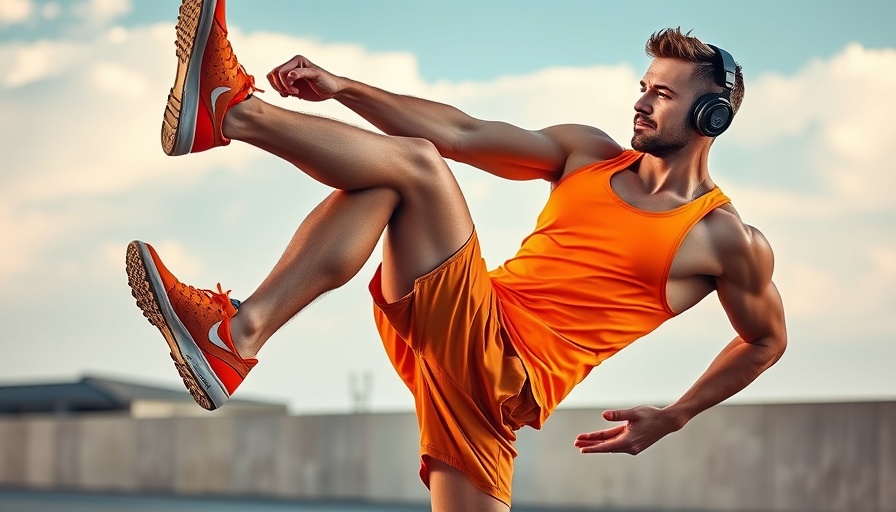
Discovering Your True Fitness Age with Bodyweight Tests
Getting older is a beautiful journey, but staying healthy as we age can sometimes feel daunting. Most people think that their age is defined by the number of birthdays they've celebrated, but what if your true age—especially post-40—could be gauged by your physical capabilities instead? By using four basic bodyweight tests, you can uncover your true fitness age, arming yourself with the knowledge to maintain a youthful energy and vitality.
The Importance of Movement Efficiency
Fitness expert Stewart Parnacott emphasizes that after 40, the focus shifts—not just on muscle strength but also on balance, control, and how your joints function. These concerns reflect the body’s adaptability and responsiveness, essential aspects that we often ignore until they slip away. In essence, our fitness age gives insight into how your body manages everyday movements, which is vital for any wellness seeker.
The Four Essential Tests
Here’s a closer look at the four fundamental bodyweight tests that help reveal your fitness age and where you stand in terms of physical function:
1. The Deep Squat
This test gauges the synergy of your joints—hips, knees, and ankles. To perform:
- Stand tall with your feet shoulder-width apart.
- Bend your knees and squat as low as comfortable while keeping your chest tall and heels down.
- Hold this position for 30 seconds.
If you can hold your balance, congratulations! This shows strong joint function and coordination.
2. The Single-Leg Balance
This exercise may appear simple, but it highlights the stability of your body. Try this:
- Stand tall and lift one foot off the ground.
- Balance on the other foot for 30 seconds without wobbling or holding onto anything.
Failing to stay balanced could mean that the stabilizing muscle and nervous system aren’t firing like they used to—a critical insight!
3. The Push-ups
Push-ups are a classic test of upper body strength. Here’s how to do it:
- Get in a high plank position, hands beneath shoulders and body straight.
- Bend your elbows to lower yourself, then press back up to a straight position.
- Complete 10 reps with smooth, controlled movements.
If you find it difficult to complete even five, it might be time to focus on strengthening your upper body to maintain muscle endurance.
4. The Sit-to-Stand Test
This test measures your strength, balance, and flexibility:
- Begin seated cross-legged on the floor.
- Stand up completely with minimal support from your hands, then sit back down in reverse.
Successfully completing this demonstrates good overall fitness—perfect for maintaining an active lifestyle.
Why This Matters for Health Enthusiasts
Understanding these tests isn’t just about numbers or fitness age—it’s about empowering yourself. Knowledge about your physical capabilities helps inform your fitness routine and dietary choices. As health enthusiasts, it’s beneficial to approach fitness with a viewpoint that emphasizes functional wellness rather than aesthetics.
Taking Control of Your Health Journey
Engaging in these assessments offers a comprehensive view of where your body stands today, guiding your next steps in improving health. Incorporate regular physical activity, stay hydrated, and explore nutrient-rich foods to enrich your journey toward optimal wellness.
With knowledge comes the power to act. Consider adding these tests to regularly assess your fitness age and adjust your health strategies as needed. Remember, with the right approach, it’s entirely possible to feel years younger than your actual age!
 Add Row
Add Row  Add
Add 







Write A Comment